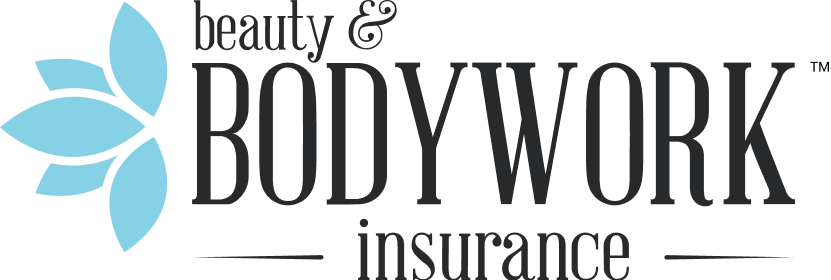Massage therapy is often a rewarding career, but studying to become a therapist is no weekend spa retreat. You’ve got coursework, board exams, certification, and eventual licensing processes to think about. That’s a lot!
That’s why we’ve created this guide — to help simplify the difference between a massage therapy license and certification, along with when you need each and why.
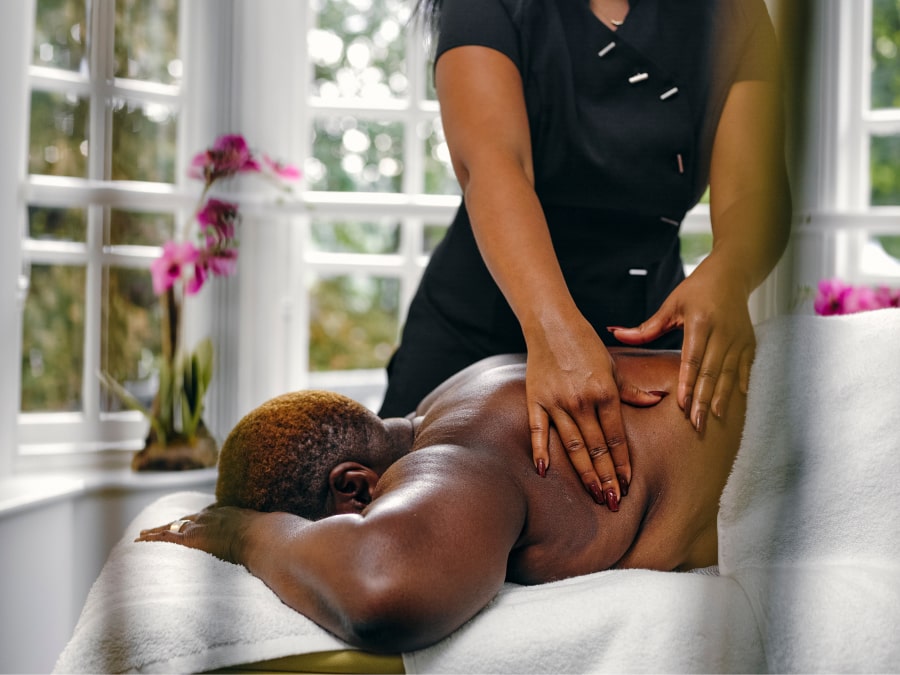
What is a Massage Therapy License?
A massage therapy license is a state-issued credential that proves you’ve met the state board’s requirements to practice massage. Those requirements typically include:
- A minimum number of education hours
- A passing score on an accredited certification exam
- A background check
- A minimum amount of liability insurance
- A completed application
What a massage therapy license is not:
- The same in every state – each state has its own requirements
- Reciprocal – aka if you’re licensed in one state, it does not mean you’re automatically licensed in others
- Optional – unless you live in one of the five states that do not issue licenses at all
Most states have specific licensing laws — meaning you must get a massage therapy license before you are legally allowed to work as a massage therapist.
Pro tip: Only five states do not issue massage therapy licenses: California, Kansas, Minnesota, Vermont, and Wyoming
How Do I Become a Licensed Massage Therapist?
To become a licensed massage therapist (LMT), you need to get the proper training, credentials, and state board approvals. Each state’s specific requirements are different, but they all follow these five general steps:
- Complete an accredited education program: Learn anatomy, physiology, massage techniques, and ethics
- Complete the minimum training hours: Get your classroom or hands-on practice hours
- Pass an approved board exam: Some states require additional state-law specific exams in addition to general board exams
- Submit a background check: Most states require a background check to ensure client safety
- Submit your application: Gather all your documents and fees and apply for licensure with your state board
How Much Does It Cost to Get a Massage Therapy License?
Massage therapy licenses typically cost between $200-$300 the first time you apply. Most states have application and processing fees on top of the license fee itself. Renewal fees are usually close to, if not the same as the initial license cost without the other fees.
Please note that this is the cost for the license only and does not include educational or training costs.
Find a summary of licensing fees with our state-by-state massage license directory.
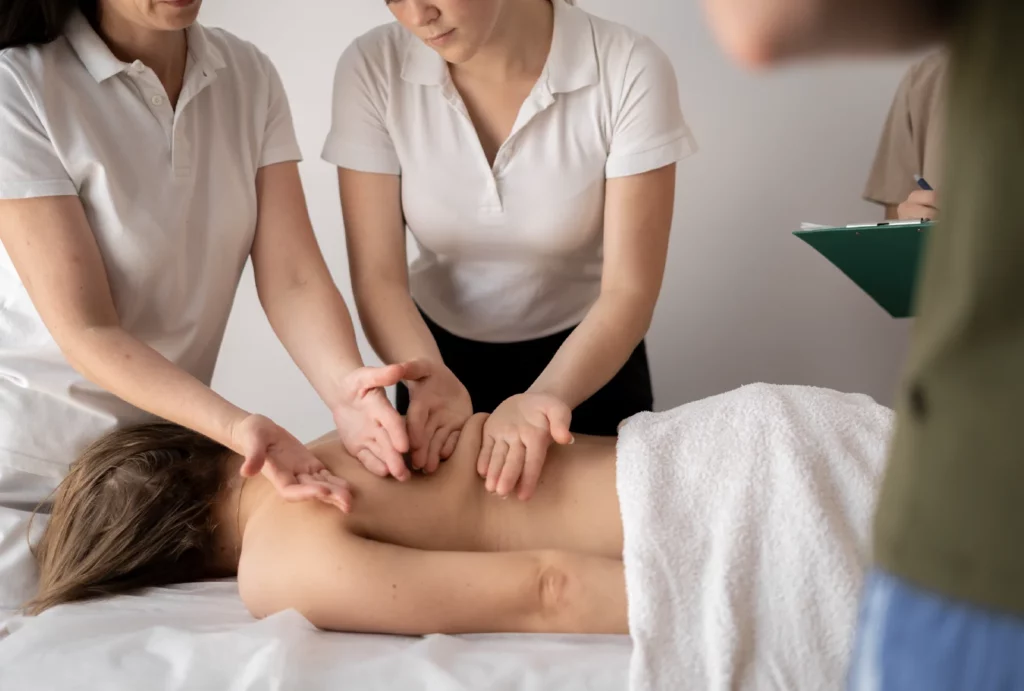
What is a Massage Therapy Certification?
Massage therapy certifications are advanced education credentials. They’re considered voluntary and serve as proof of your proficiency in massage therapy principles and techniques.
Another way to look at certification is this: There are several national exams you can take after completing your massage therapy education. When you pass one of these official exams, you’re considered “certified.”
Pro tip: While a certification is considered voluntary, most states with licensing laws include proof of certification from a recognized organization as part of their license requirements.
Potential massage therapy certifications include:
- Associate’s degrees in massage therapy
- Specific Board certifications
- Skill-based certifications
Associate of Applied Science (A.A.S.) Degree in Massage Therapy
This is the highest educational credential for massage professionals. Since it’s technically a college degree, you may need to take prerequisite courses in subjects like anatomy, physiology, or healthcare at a university or community college.
Massage Therapist Board Certifications (BCMT)
A Board Certified Massage Therapist (BCMT) is someone who passes a professional exam. These are offered by recognized professional organizations. The most common board certifications are:
- The National Certification Board for Therapeutic Massage & Bodywork (NCBTMB)
- The Massage and Bodywork Licensing Examination (MBLEx)
- The National Board Certification Agency (NBCA)
NCBTMB and MBLEx certifications are the most widely recognized in the industry. States that require a license typically accept one of these as proof of your education and qualifications.
The NBCA primarily conducts board exams designed for medical massage therapists.
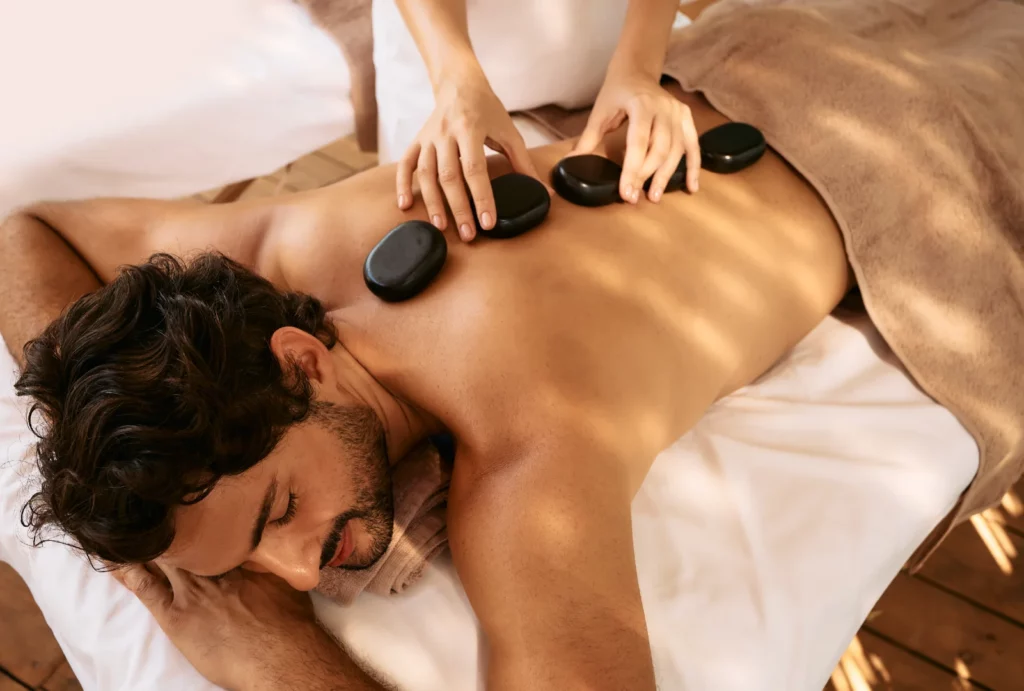
Skill-Specific Certifications
Skills certifications are generally offered by private organizations, and often require a period of hands-on practice and a final exam. The test is administered by the organization or governing body that regulates the material and approves the coursework.
Examples include:
- Hot stone massage: massage that uses heated stones to relax clients’ muscles
- Thai massage: full-body massage that combines pressure with assisted yoga poses and stretching
- Instrument-assisted soft tissue mobilization (IASTM): massage that uses specialized tools in addition to or instead of only the therapist’s hands
Medical Massage Certification
Medical massage certs are designed to alleviate pain caused by injuries or illnesses and promote healing through corrective and restorative techniques. Examples include:
- Oncology massage: massage therapy specifically designed for people living with cancer
- Orthopedic massage: massage therapy designed for musculoskeletal injury rehabilitation
- Prenatal massage: massage therapy designed for treating pregnant clients
- Structural integration: a bodywork modality focused on fascia, the body’s connective tissue
The techniques used in these specialities often require more extensive education and a longer hands-on training period before certification is granted.
What’s the Difference Between Certification and Licensing?
Certification is like graduating and getting a diploma, it’s proof of your education. Licensing is your legal authorization to work and provide your services to the public.
Certification = proof of education and knowledge
License = legal authorization to work in a specific region
If you live in one of the five states that do not issue licenses, you typically need to have a certification from a recognized organization to work legally.
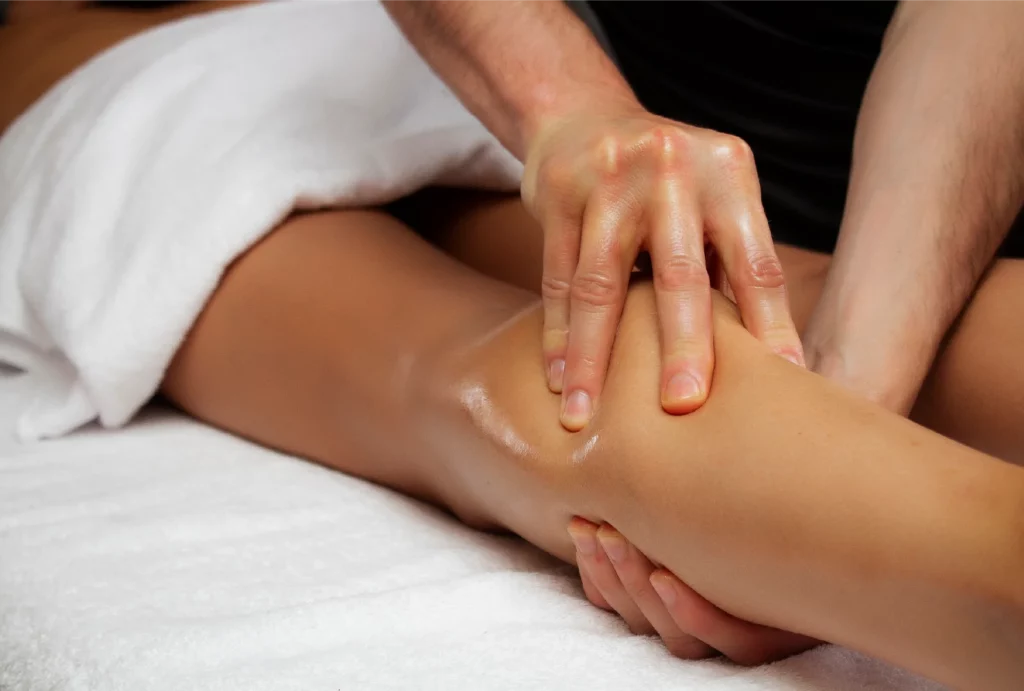
Massage Therapy Certifications: A Pathway to Professional Growth
Certifications help build professional authority and expertise and are essential qualifications for landing a job.
As mentioned earlier, the MBLEx and the NCBTMB are the two most widely accepted board certifications. To earn them, you must meet specific education and experience requirements, pass their exam, and adhere to their code of ethics.
Skill-specific certs help you advance your career by allowing you to specialize in an area, or expand the services you offer. Plus, pursuing additional certs is a great way to satisfy continuing education requirements.
Types of Skill Certifications
Some of the most common skills certifications include object-assisted therapies and area-specific massage.
Object-assisted therapies are practices that use equipment or props to enhance the massage. Examples include:
- Hot or cold stone massage therapy
- Aromatherapy
- Chair massage
These types of massage modalities depend on traditional pressure and movement principles aided by certain objects that elicit reactions in the body. Stones, for example, help specific tissues to relax based on their temperature.
Other certifications focus on specific areas or tissues in the body. Examples include:
- Acupressure: pressing on specific points on the body to promote relaxation and reduce pain
- Lymphatic massage: massage designed to reduce swelling by gently manipulating specific areas of your body to relieve fluid buildup
- Myofascial release: a form of gentle, constant massage designed to relieve tightness and pain
- Reflexology: a type of massage where pressure is applied to specific points on the feet or hands to promote relaxation
These disciplines aim to treat specific areas of the body through direct pressure or manipulation of connected structures. Acupressure and lymphatic massage, for example, target areas of the body that promote general reactions in the nervous and lymphatic systems.
Potential massage modalities, techniques, and skills certs:
- Hot/Cold stone massage
- Aromatherapy
- Chair massage
- Accupressure
- Craniosacral therapy
- Lymphatic massage
- Myofascial release
- Reflexology
- Scandinavian mobilization therapy
- Thai massage
- Swedish massage
- Deep tissue massage
- Shiatsu massage
- Trigger point massage
- Muscle Energy Technique (MET)
- Connective Tissue Massage (CTM)
- Oncology massage
- Orthopedic massage
- Prenatal massage
- Sports massage
- Structural integration
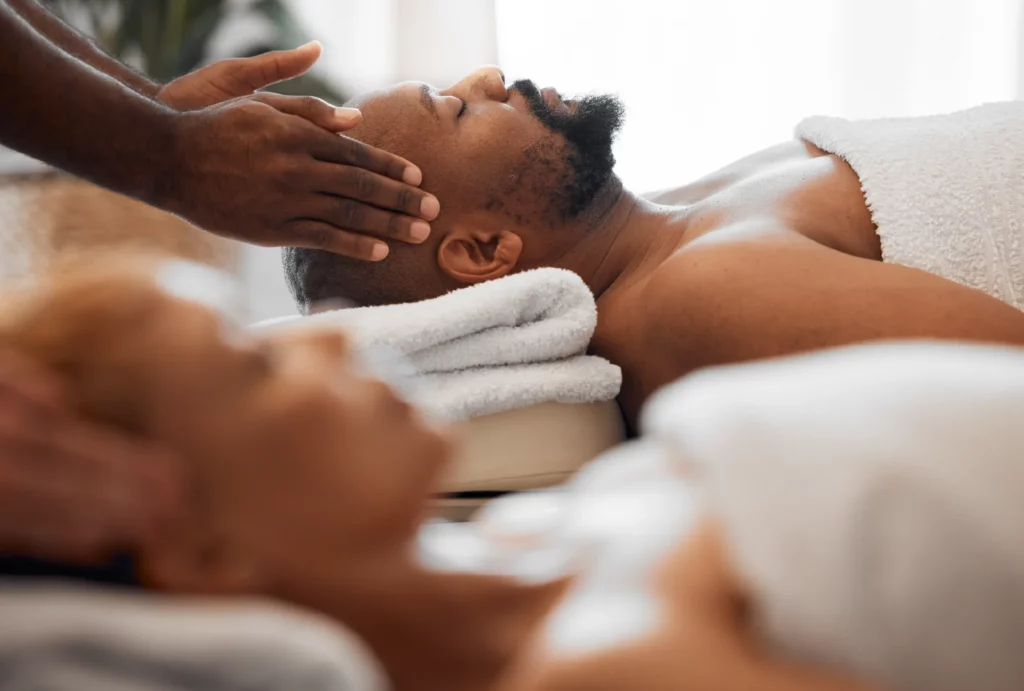
How Long Does It Take to Get Certified as a Massage Therapist?
Most certification programs require at least 500 hours of study. Since some states require more time as part of their licensing requirements, some massage schools include more than 500 educational hours.
How long it takes to get a certification in terms of months or years depends on the education program and if you’re enrolled full- or part-time. Most reports state it takes between six months to two years to complete a massage therapy program.
How Much Does It Cost to Get a Massage Therapy Certification?
Massage certification costs vary depending on the school or education program. Most cost between $5,000 and $15,000.
Depending on the school or training program, the cost of the board exam may or may not be included. The exams themselves cost:
Additional or continuing education skill certifications also vary in cost. Some more in-depth courses, like lymphatic massage, can cost as much as $1,300-$1,600. Less intense certifications, like hot stone or reflexology, can cost between $100-$500, depending on the course and the materials needed.
Optimize Your Massage Therapy Career with Massage Liability Insurance
Whether you work at a boutique spa, a national chain, or are starting your own massage business, liability insurance is necessary to protect your career. It provides a financial safety net in case of client injuries, property damage, or lawsuits.
Many employers also require you to carry your own liability insurance, especially if you’re considered an independent contractor (as opposed to an employee). And in some states, proof of liability insurance is required to get your license.
Beauty and Bodywork massage insurance covers you wherever you work — even if that’s in several states, multiple spas, your home, clients’ home, or all of the above. BBI also covers you for multiple modalities under one policy, as long as they’re not an excluded practice.
Get covered quickly and effortlessly today for only $96/year, or $9.99/month.

Frequently Asked Questions About Massage Therapy Licenses and Certifications
Do I Need a Massage Therapy Certification to Practice?
Yes. A massage therapy certification is typically the minimum requirement to legally work as a massage therapist in the United States.
Do I Need a Massage Therapy License to Practice?
Most of the time: yes. But it depends on the state. The following states do not require a license:
- California
- Kansas
- Minnesota
- Vermont
- Wyoming
What Is the Average Salary of a Licensed Massage Therapist?
What you make as an LMT is influenced by your location, experience, and type of practice, among other things. Massage therapists typically make between $20 and $30 per hour.
